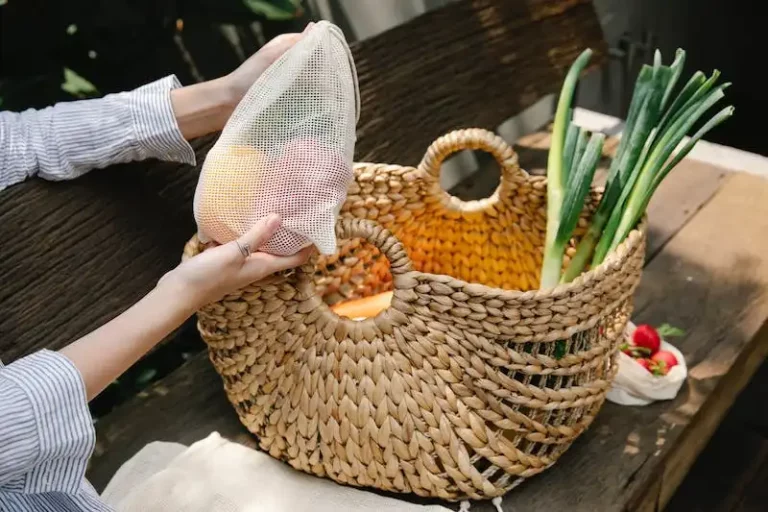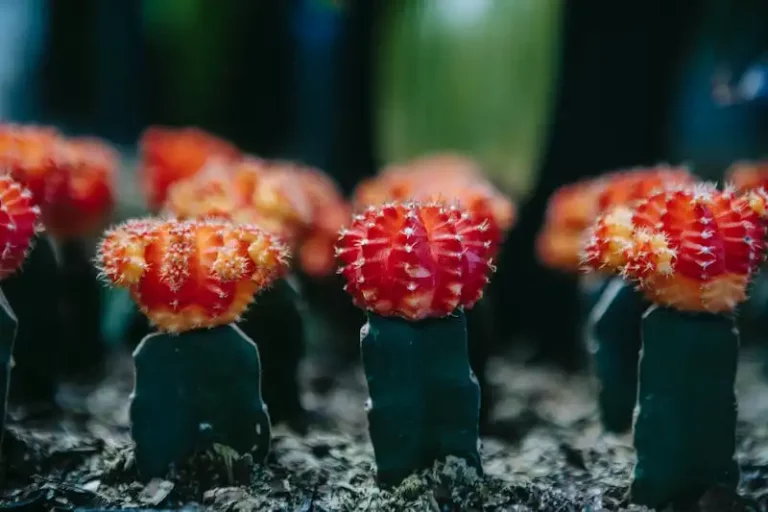Pomegranates are a delicious and healthy fruit that is frequently enjoyed by many. However, knowing when to pick pomegranates can be a challenge for those who are new to growing them. In this guide, we will tell you everything you need to know about how to harvest pomegranates at the perfect moment.
One of the most common questions asked by pomegranate growers is when to pick them. The timing of the harvest depends on a few factors, including the climate in your area and the variety of pomegranate you are growing. Generally, pomegranates are ready to be picked in the late summer or early fall, typically around September or October.
So, how do you know when a pomegranate is ready to be picked? There are certain signs to look out for. Firstly, pomegranates should feel heavy in your hand. A ripe pomegranate will be heavier than an unripe one. Secondly, the color of the fruit is an important indicator. Most pomegranate varieties start off green and then turn yellow or pink as they ripen. Finally, the skin of a ripe pomegranate should be firm and smooth.
When it comes to picking pomegranates, it’s important to use the right technique. You’ll need a sharp pair of kitchen scissors or pruning shears to cut the fruit off the tree. Be careful not to damage the fruit or the tree while doing so. To avoid any injuries, wear gloves to protect your hands from thorns or sharp branches.
Once you’ve picked your pomegranates, you may wonder how to store them. Pomegranates can be stored for several weeks if kept in a cool and dry place. You can also refrigerate them if you want to extend their shelf life. When stored properly, pomegranates can last for up to two months.
If you’re wondering how to enjoy your freshly harvested pomegranates, there are countless recipes and ways to use them. Pomegranates can be juiced, added to salads, used in sauces, or simply eaten fresh. Their distinctive taste and vibrant color make them a perfect addition to many dishes.
In conclusion, knowing when to pick pomegranates is crucial for harvesting them at their best. By inspecting the fruit for signs of ripeness, using the right tools and techniques for picking, and properly storing them, you can enjoy the full flavor and benefits of your pomegranates for weeks or even months.
When Are My Pomegranates Ripe? Harvest Tips for Home-Grown Pomegranates
If you have a pomegranate tree in your garden, you may be wondering when it’s time to harvest those juicy fruits. Harvesting pomegranates at the right moment is essential to ensure optimal flavor and ripeness. Here are some tips to help you determine when your pomegranates are ready for picking.
One of the first cues to look for is the appearance of the pomegranate fruit. Ripe pomegranates will show a deep, rich color – usually a vibrant shade of red or orange – depending on the variety. The fruit may also feel slightly heavy for its size, indicating a good amount of juice inside. Additionally, the calyx or flower end of the fruit, where the stem attached, should be slightly open, allowing you to see the seeds inside.
To be sure, you can gently open a pomegranate and inspect the seeds. The seeds should be a deep red color and have a firm yet plump texture. If some of the seeds are white or translucent, it means the fruit is not yet fully ripe.
When harvesting pomegranates, it’s important to use a sharp tool, such as pruning shears or a knife, to prevent damage to the tree and fruits. Cut the pomegranate off the branch, leaving a small portion of the stem attached. Avoid pulling or twisting the fruit as it may cause injury to the tree.
If you’re unsure about the ripeness of your pomegranates, you can try a taste test. Cut open a small portion of the fruit and sample the seeds. Ripe pomegranates will have a rich, sweet, and slightly tart flavor. If the taste is too tart or sour, it’s an indication that the fruit needs more time to ripen.
It’s important to note that pomegranates do not continue to ripen once picked from the tree. So, it’s crucial to harvest the fruits at the right time to enjoy their full flavor. If you leave the pomegranates on the tree for too long, they may become overripe and burst open, resulting in poor storage and shorter shelf life.
Once harvested, pomegranates can be stored in a cool, dry place for several weeks. They can also be refrigerated to prolong their freshness. If you don’t plan on consuming the fruits right away, pomegranate seeds can be extracted and stored in an airtight container in the freezer for future use. Pomegranate juice can also be extracted and used in various recipes, such as sauces, marinades, or a refreshing addition to smoothies.
In conclusion, knowing when to pick pomegranates is crucial for enjoying their delicious flavor. By paying attention to the visual and tactile cues, such as color, weight, and the open calyx, you can ensure that your home-grown pomegranates are harvested at the perfect stage of ripeness. Harvesting with care using sharp tools and properly storing the fruits will allow you to enjoy the vibrant taste of pomegranates for weeks to come.
For more tips and FAQs on pomegranate harvesting, check out our website where you can find helpful information and delicious recipes to make the most of your pomegranate harvest.
When to Pick Pomegranates: A Guide to Pomegranate Harvesting
If you have pomegranate trees in your garden, knowing the perfect time to harvest the fruits can be a tricky task. Pomegranates can take a considerable amount of time to ripen, depending on various factors such as the weather, temperature, and variety of the fruit. In this guide, we will teach you when and how to pick pomegranates, ensuring that you enjoy the best possible harvest for your home-grown fruits.
One of the most common questions is how to tell when a pomegranate is ripe. Well, the appearance of the fruit can give you a good indication. Ripe pomegranates tend to have a deep red color, and their skin will be firm and slightly shiny. It’s worth noting that pomegranates do not continue to ripen once they are picked, so it’s important to wait until they are fully ripe before harvesting.
A technique called “tapping” can also help you determine if a pomegranate is ready for picking. Using your finger or a small object like a spoon, gently tap the fruit. If you hear a hollow sound, it indicates that the fruit is ripe and ready to be harvested. This method works because as the pomegranate ripens, the pulp inside will dry out, creating an empty space that produces the hollow sound when tapped.
Another clue that the pomegranate is ripe is its weight. Ripe pomegranates are heavier than unripe ones due to the higher juice content. Take note that the weight method may not be accurate for all pomegranate varieties, so it’s always best to combine different techniques to get the most reliable result.
When it comes to harvesting, it’s essential to use the right tools. Pomegranates have a thick skin and can be challenging to remove without causing damage to the fruit. A sharp pair of pruning shears or scissors can be used to cut the stem, leaving a small portion attached to the fruit.
Once you have harvested your pomegranates, it’s important to handle them with care to avoid bruising. Inspect each fruit for any signs of damage or rot, and discard any that are not in good condition. Properly stored, pomegranates can last for several weeks, depending on the variety.
| Harvesting Tips: |
|---|
| 1. Wait until the pomegranate fruit is fully ripe, with a deep red color and a firm, shiny skin. |
| 2. Use the tapping technique to listen for a hollow sound, indicating ripe fruit. |
| 3. Consider the weight of the fruit, as ripe pomegranates are generally heavier. |
| 4. Use sharp pruning shears or scissors to cut the stem. |
| 5. Inspect each fruit for any signs of damage or rot before storing. |
By following these guidelines, you can confidently harvest your pomegranates at the right time and enjoy their delicious flavor and unique texture. Whether you plan to use them in the kitchen for preserving or simply love snacking on them fresh, knowing when to pick pomegranates is key to getting the best out of your fruit-bearing trees.
Factors that Affect When to Pick Pomegranates
When it comes to picking pomegranates, there are several factors that can affect the ideal time for harvesting. Understanding these factors can help ensure that you pick pomegranates at their peak ripeness, resulting in the best flavor and texture.
One of the main factors to consider is the variety of pomegranate. Different varieties have different ripening times, so it’s important to know the specific characteristics of the variety you are growing. Some varieties, such as the Vanessa variety, ripen as early as September, while others may not be ready until later in the fall.
Climate also plays a role in determining when to pick pomegranates. Pomegranate trees thrive in Mediterranean-like conditions, with hot summers and mild winters. If you live in a colder climate, you may need to wait longer for your pomegranates to ripen. Similarly, if you live in a region with a shorter growing season, you may want to consider planting early-maturing varieties.
An easy technique to check if pomegranates are ready to pick is the “sound test.” By tapping the fruit gently with your finger or knuckle, you can listen for a hollow sound. If the sound is dull and thud-like, the pomegranate is not ripe yet. However, if you hear a deeper, hollow sound, then your pomegranate is ready to be harvested.
Another way to tell if a pomegranate is ripe is by inspecting its appearance. Ripe pomegranates will have a deep, vibrant color, usually ranging from dark red to pink. The skin should be firm and smooth, without any soft spots. While some pomegranate varieties may have a slightly cracked or bumpy skin, these imperfections should not be too pronounced.
It’s important to note that pomegranates do not continue to ripen once they are picked from the tree. So, it’s crucial to wait until they are fully ripe before harvesting. If picked too early, the fruits may not have reached their full flavor potential.
Pomegranates can be stored at room temperature for up to a week, or in the refrigerator for up to a month. If you plan on preserving the fruit or using it in recipes, it’s best to pick them when they are fully ripe.
In conclusion, understanding the factors that affect when to pick pomegranates can help you make the most out of your harvest. Factors such as the variety, climate, appearance, and sound can all provide valuable information about the fruit’s ripeness. By paying attention to these factors and using the appropriate techniques, you’ll be able to enjoy the delicious flavor of your pomegranates for years to come.



